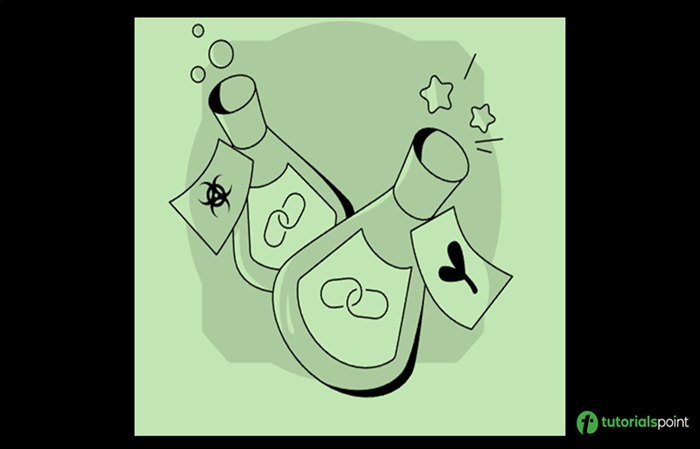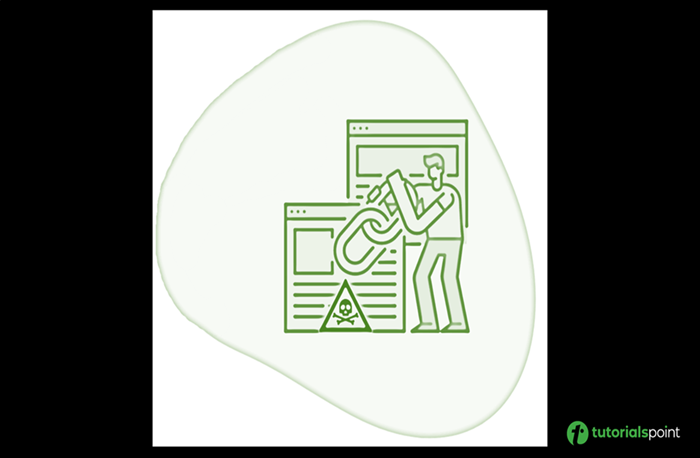
- SEO - Home
- SEO - What is SEO?
- SEO - Tactics & Methods
- SEO - On Page Techniques
- SEO - Off Page Techniques
- SEO - Web Site Domain
- SEO - Relevant Filenames
- SEO - Design & Layout
- SEO - Optimized Keywords
- SEO - Long-tail Keywords
- SEO - Title Tags
- SEO - Meta Description
- SEO - Optimized Metatags
- SEO - Optimize for Google
- SEO - Robots.txt
- SEO - URL Structure
- SEO - Headings
- SEO - Redirects
- SEO - Authority & Trust
- SEO - PDF Files
- SEO - Optimized Anchor
- SEO - Optimize Images
- SEO - Duplicate Content
- SEO - Meta Robots Tag
- SEO - Nofollow Links
- SEO - XML Sitemap
- SEO - Canonical URL
- SEO - Role of UI/UX
- SEO - Keyword Gap Analysis
- SEO - Get Quality Backlinks
- SEO - Adding Schema Markup
- SEO - Author Authority
- SEO - Fix Broken Links
- SEO - Internal Page Linking
- SEO - Clean Up Toxic Links
- SEO - Earn Authority Backlinks
- SEO - Core Web Vitals
- SEO - Update Old Content
- SEO - Fill Content Gaps
- SEO - Link Building
- SEO - Featured Snippets
- SEO - Remove URLS from Google
- SEO - Content is the King
- SEO - Verifying Web Site
- SEO - Multiple Media Types
- SEO - Google Passage Ranking
- SEO - Maximize Social Shares
- SEO - First Link Priority Rule
- SEO - Optimize Page Load Time
- SEO - Hiring an Expert
- SEO - Learn EAT Principle
- SEO - Mobile SEO Techniques
- SEO - Avoid Negative Tactics
- SEO - Misc Techniques
- SEO - Continuous Site Audit
- SEO - Summary
- SEO Useful Resources
- SEO - Quick Guide
- SEO - Useful Resources
- SEO - Discussion
SEO - Clean Up Toxic Links
Anyone who has used link building for SEO over the last several years will tell you that the biggest and most serious concern with the method is being penalised for publishing spammy links. The age of quantity-based link evaluation is over, thanks to updates to Google's core algorithm, notably Google SpamBrain. The search engine giant can now identify whether your connection was made "naturally" to add value to online users or "unnaturally" to improve your rank.
Toxic Links: What Are They?
Toxic links include links to your website that impact Google's overall assessment of your site, resulting in a drop in your general ranking. These links are defined uniquely in every SEO manual, and Google has no definition of a toxic link. Instead, Google uses "spammy links" or "manipulative links." Google will label links as spammy if it detects manipulative SEO practices such as replicating text and linking from similar articles on various sites.

What Causes Toxic Links?
The various factors that can raise the toxic level of a link in the eyes of search engines include −
Mirrored webpages - If comparable web pages on several sites use an identical anchor text to link to you, search engines may interpret this as a link-building technique.
Poor domain trust grade - This relies on the number of links from trusted websites to the domain offering the backlink. A low rank indicates that the domain score of the site has been intentionally boosted. Backlinks from such sites often seem spammy.
If the observable text-to-HTML ratio is low, the page that links may appear low-quality.
Effect of ToxicLinks
Manipulative link-building strategies have been less popular since the Google Penguin algorithm upgrade. Additionally, Google hasincreased the number of people on its spam team who may actively penalisesites with harmful links. Also, algorithms have matured and become better at detecting spam.
Let's look at some examples of how poor link developmentpracticesmight harm your site −
Toxic links receive a penalty: Two things can primarily activate the Penguin algorithm −
keyword stuffing
linking schemes
When you are hit with this penalty, you can expect a dramatic and rapid drop in organic traffic and, in some instances, visibility. Penalties may be challenging to detect if only a few URLs are impacted at a time.
Toxic links are subject to manual intervention: Although physical acts are becoming less common, unicorns continue to exist in the linking cosmos, particularly if you're a repeat offender.
Google takes the necessary step against a website when a member of Google's webspam team examines the site's link profile and discovers many unnatural or toxic links.
An algorithm or a rival filing a spam report can also trigger a manual inspection.

Why Is It Critical to Eliminate Toxic Links?
Toxic links lower the Page Rank of the websites to which they connect. Thus, website owners desire as few as feasible of them. If Google SpamBrain discovers that a site has many poisonous links, it will likely lower its Page Rank.
If Google discovers that a site has many toxic links, it will most likely remove the website from its database entirely.
Recognising Toxic Links
There are numerous methods for assessing whether your website has hazardous links. A few examples of these are listed below −
You are aware because you produced them: If you havegenerated the toxic links by suspiciousinternet activity such as link buying or content spamming, you are already aware of their existence.
An unexpected drop in traffic: Toxic links are most likely the source of a rapid decline in organic traffic.
Google sends you a warning notification: They could have been generated by a fraudster or a problematic website that was previously linked to you. If you are unaware of such toxic links, you might only be aware of them once you receive a Google warning message.
Using SEO site audit tools or Google Search Console: It's usually simpler to utilise an SEO website audit tool to discover toxic links. This is particularly true if you last searched for hazardous links long ago (or at all)for example, SEMrush.
Manually issued penalties will appear in Google Search Console within "Security and Manual Actions > Manual Actions."
Clear Toxic Links To Optimize Your Link Profile
There are numerous approaches to dealing with toxiclinks. They are listed as follows −
Remove any links that you are in charge ofif you discover that certain links you created in the past don't adhere to the new regulations.
If you are not in charge, Google recommends seeking link removal. You must contact the website admin or owner from any mentioned contact information and request them to delete a toxic link from their website. The chances of it happening are slim, but it never hurts to ask.
You may request a review if the link is legitimate and the penalty was manually activated. According to Search Engine Watch, among the 400,000 manual penalties applied, Google processes approximately 20,000 reconsideration requests per month. The average time to hear back is about 30 days.

Disavow Links: When And How?
If there is an excess of spammy links, you won't be able to remove them by asking respectfully via an outreach email. Because of forgotten passwords or dead sites, you might be unable to erase the links you generated. Or, If the backlink isn't vital to you and you want to avoid going through the manual outreach process, you may employ the Disavow Links tool.
Sometimes, it may be your sole option for resolving the toxic link issue.
Prepare a list of the links you want to disavow using the formatting instructions listed below −
# three pages to disavow
http://spam.abcwebsite.com/elements/mirrored-links.html
http://spam.abcwebsite.com/elements/paid-links.html
http://spam.abcwebsite.com/elements/comments.html
Proceed to run the Disavow tooland submit your file.
If you submit any requests without providing evidence that you attempted to eliminate them yourself, Google may levy a specific manual penalty against you.
Conclusion
Every SEO advice worth considering will caution you against techniques like buying links or creating spam sites. Google penalises spammy or manipulative links that are toxic or harmful. Ensuring your site's links are high-quality and satisfy Google's criteria and manually eliminating or disavowing links that harm your score are essential for website maintenance for SEO.